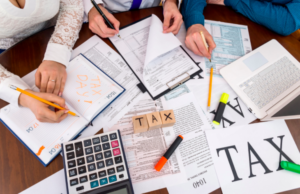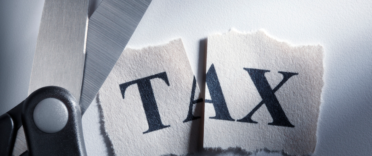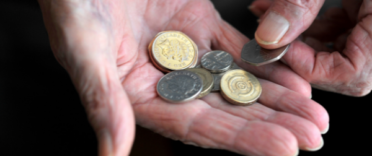 How much tax will I pay on my income in 2022/23?
How much tax will I pay on my income in 2022/23?
Personal Allowance
Your Personal Allowance is the element of your income that is tax free and this has been frozen for the 2022/23 tax year remaining at £12,570, where it will stay until 2026 (as announced in the 2021 Budget).
The freezing of the Personal Allowance is likely to mean that over 1.3 million more people will pay income tax by 2026 as salary increases push them above the Personal Allowance.
Any income that falls above the Personal Allowance but below the Higher Rate Threshold will be taxed at 20%. We explain more about the Higher RateThreshold below.
Higher Rate Threshold
Earnings above the Higher Rate Threshold will be taxed at 40%. For the tax year 2022/23 the Higher Rate Threshold remains at £50,270, again, this is frozen until 2026 as announced in the 2021 Budget. The freezing of the Higher Rate Threshold is likely to mean around 1 million more people will pay the higher rate of 40% on some of their earnings as salary increases move their income over the Higher Rate Threshold.
Additional Rate Threshold
Earnings above the Additional Rate Threshold will be taxed at 45%. For the tax year 2022/23 the Additional Rate Threshold is £150,000 and will remain at this level until 2026.
Reduced Personal Allowance
If an individual’s total income is in excess of £100,000 their Personal Allowance will be reduced by £1 for every £2 earned above £100,000 per tax year and will be zero for those earning £125,000 or more.
Marriage Allowance
The Marriage Allowance allows an individual to transfer up to £1,260 of unused Personal Allowance to a husband, wife or civil partner which can reduce their income tax bill by up to £252.
Blind Person’s Allowance
The Blind Person’s Allowance is an additional tax-free allowance for blind individuals of £2,600 (2022/23). This allowance can be transferred to a spouse or civil partner if the individual's Personal Allowance has not been fully used.
Child Benefit Charge
The Child Benefit Charge is paid if you or your partner are in receipt of Child Benefit and either of you has an individual income in excess of £50,000.
A tax charge will be levied at the rate of 1% of the Child Benefit received for every £100 of personal income between £50,000 and £60,000.
Summary of income tax rates and thresholds for 2022/23
| Type of allowance | 2022/23 | Tax rate |
| Personal Allowance | £12,570 | 20% |
| Higher Rate Threshold | £50,270 | 40% |
| Additional Rate Threshold | £150,000 | 45% |
| Reduced Personal Allowance | Above £100,000 Personal Allowance | Personal Allowance reduced by £1 for every £2 earned |
| Marriage Allowance | Transfer up to £1,260 of unused Personal Allowance to spouse or civil partner | N/A |
| Blind Person's Allowance | Additional personal Allowance of £2,600 | N/A |
| Child Benefit Charge | Levied if either partner has income over £50,000, | Reduction of 1% of benefit received for every £100 of income between £50,000 and £60,000. |
How much tax will I pay on my savings in 2022/23?
Personal Savings Allowance
The Personal Savings Allowance is a tax-free allowance in addition to your Personal Allowance that lets you earn interest on your savings without paying tax. Basic-rate (20%) taxpayers: can earn an extra earn £1,000 in savings interest per year with no tax, Higher-rate (40%) can earn an extra £500 and there is no additional allowance available for Upper-rate taxpayers.
Starting rate for savings
If your income is less than £17,500 you may also be entitled to an extra £5,000 of interest without paying tax. This allowance reduces by £1 for every £1 of income above your Personal Allowance
How much tax will I pay on dividends I receive in 2022/23?
Dividends are paid to shareholders from a company's profits. Dividends can only be paid from profits available from the company's current or previous financial years.
The amount of tax you will pay on dividends depends on your income as follows:
| Basic-rate taxpayer | Higher-rate taxpayer | Upper-rate taxpayer | |
| Dividends up to £2,000 in tax year | Nil | Nil | Nil |
| Dividends paid over £2,000 in tax year | 8.75% | 33.75% | 39.35% |
How much National Insurance contributions will I pay on my income in 2022/23?
National Insurance Contributions are mandatory if you are over the age of 16 and are payable if you are either:
- Employed and earning in excess of £242 per week
- Self-employed and making a profit of at least £6,725 per year
National Insurance contributions qualify you for a State Pension and certain other benefits. To receive a State Pension on retirement you will need a minimum of 10 years contributions with 35 years contributions required to receive a full State Pension. Any shortfall in the qualifying years can be made up with voluntary contributions.
National Insurance rose by 1.25 percentage points in April 2022 to help raise additional funds for the NHS and social care.
The amount of National Insurance contributions an individual pays will depend on their income and employment status as follows:
| Status | NI Class | Threshold | NI rate |
| Employed | Class 1 | Earnings between £242 and £967 per week | 13.25% |
| Employed | Class 1 | Earnings over £967 per week | 3.25% |
| Self-employed | Class 2 | Annual profits of £6,725 or more | £3.15 per week |
| Self-employed | Class 4 | Annual profits between £12,570 and £50,270 | 10.25% |
| Self-employed | Class 4 | Annual profits over £50,270 | 3.25% |

 How much tax will I pay on my income in 2022/23?
How much tax will I pay on my income in 2022/23?




